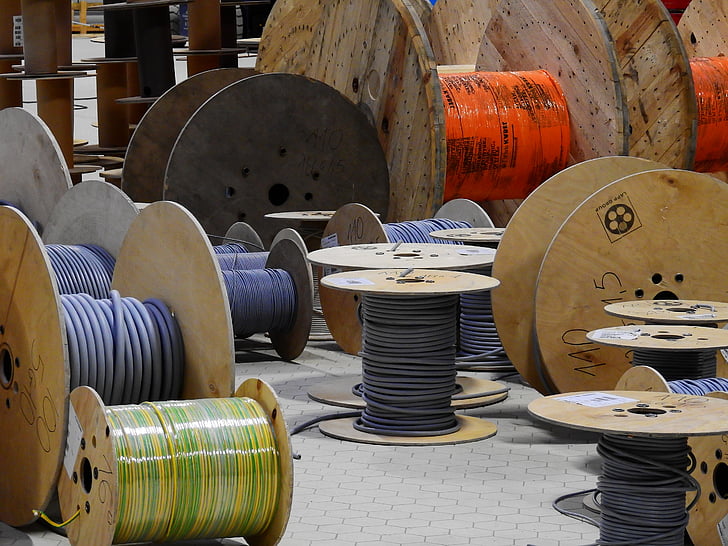What is Electricity?
페이지 정보
작성자 Brook 작성일 24-09-03 15:25 조회 11 댓글 0본문
Underground lines are limited by their thermal capacity, which permits less overload or re-rating lines. DC cables are not limited in length by their capacitance. Electric power can be transmitted by underground power cables. The optimum size of a conductor for a given voltage and current can be estimated by Kelvin's law for conductor size, which states that size is optimal when the annual cost of energy wasted in resistance is equal to the annual capital charges of providing the conductor. Thus, reducing the current by a factor of two lowers the energy lost to conductor resistance by a factor of four for any given size of conductor. These conductor in form of a stranded wire which are insulated with a polymer (non-conductive) coating is a wire while a cable is combination of two or more shielded wired with a single cover which is used for generation, distribution and transmission of electrical power. Subtransmission circuits are usually arranged in loops so that a single line failure does not stop service to many customers for more than a short time.
These included single phase AC systems, poly-phase AC systems, low voltage incandescent lighting, high-voltage arc lighting, and existing DC motors in factories and street cars. These were induction motors running on polyphase current, independently invented by Galileo Ferraris and Nikola Tesla. Practical three-phase motors were designed by Mikhail Dolivo-Dobrovolsky and Charles Eugene Lancelot Brown. Widespread use of such motors were delayed many years by development problems and the scarcity of polyphase power systems needed to power them. New York and California, it is almost impossible to build new generating capacity-much less nuclear power plants-where the greatest needs are. This restricted the distance between generating plant and loads. The first transmission of single-phase alternating current using high voltage came in Oregon in 1890 when power was delivered from a hydroelectric plant at Willamette Falls to the city of Portland 14 miles (23 km) down river. AEP built the first high-voltage transmission line, between Muncie and Marion in Indiana in 1911, the first long-distance line, transmitting electricity from a coal mine mouth plant, and the first commercial nuclear power plant on Lake Michigan, at the two-unit Donald Cook station, in the early 1970s. The wheeling of power, which is the transfer of electricity from one supplier over the transmission lines of another system, to where it was needed by a third customer, was used by regulated utilities to increase the reliability of regional grids, in case of an unscheduled shutdown of large generating units, what are electric cables such as from storms or other acts of nature.
A 15 kV transmission line, approximately 175 km long, connected Lauffen on the Neckar and Frankfurt. For a long transmission line, these lower losses (and reduced construction cost of a DC line) can offset the cost of the required converter stations at each end. SIL, the voltage drops from sending end and the line consumes VARs. Commercial electric power was initially transmitted at the same voltage used by lighting and mechanical loads. Voltage was stepped down to 100 volts using the Stanley transformer to power incandescent lamps at 23 businesses over 4,000 feet (1,200 m). In 1882, DC voltage could not easily be increased for long-distance transmission. Transmission efficiency is improved at higher voltage and lower current. Underground cables take up no right-of-way, have lower visibility, and are less affected by weather. At times of lower interest rates and low commodity costs, Kelvin's law indicates that thicker wires are optimal. Since power lines are designed for long-term use, Kelvin's law is used in conjunction with long-term estimates of the price of copper and aluminum as well as interest rates. Interconnection of local generation plants and small distribution networks was spurred by World War I, when large electrical generating plants were built by governments to power munitions factories.
Transmission & Distribution World. The rate of transmission expansion needs to double to support ongoing electrification and reach emission reduction targets. Working with the support of George Westinghouse, in 1886 he demonstrated a transformer-based AC lighting system in Great Barrington, Massachusetts. The transmission network is usually administered on a regional basis by an entity such as a regional transmission organization or transmission system operator. In 1995, FERC proposed another rule to mandate open access, this time by any producer, to the transmission network. As has often been noted, FERC has never met a utility merger it didn't like. These companies developed AC systems, but the technical difference between direct and alternating current systems required a much longer technical merger. In the late 1880s and early 1890s smaller electric companies merged into larger corporations such as Ganz and AEG in Europe and General Electric and Westinghouse Electric in the US. Westinghouse licensed Tesla's design. If an electric fault damages the pipe and leaks dielectric, liquid nitrogen is used to freeze portions of the pipe to enable draining and repair.

- 이전글 5 The 5 Reasons Upvc Windows Near Me Is Actually A Beneficial Thing
- 다음글 15 Best Compact Double Stroller Bloggers You Must Follow
댓글목록 0
등록된 댓글이 없습니다.